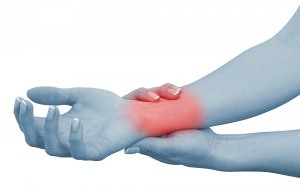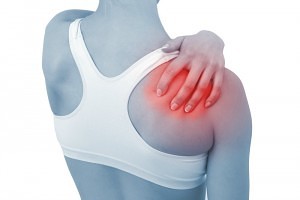Our services are exceptional and we promise quality one-on-one care.
Hand Conditions · Wrist Disorders · Elbow Disorders · Shoulder & Neck Conditions
Hand Therapy Services
- Rehabilitation programs customized to your specific injury or condition
- Current, state-of-the-art treatment techniques aimed at maximizing your strength, motion and function
- Use of appropriate modalities and hands-on manual techniques to maximize a pain-free recovery
- Customized management of scars, pain, swelling and hypersensitivity
- Patient education essential to maintaining pain-free function and injury prevention
- Wound care management
- Customized splints specially designed to meet your specific needs
- Post-surgical rehabilitation and surgical prevention programs
- Edema management
- Microcurrent
Other Services Offered:
- Wheelchair Evaluations
Conditions Treated
Hand Conditions
Finger Fractures and Dislocations - Whether it’s a jammed finger or a finger pinched between two objects, these injuries can often cause fractures or dislocations. If these go left untreated they can turn into permanent deformities or functional deficits.
Arthritis - This condition is caused by aging joints, injury, or over-use. Symptoms include joint pain, stiffness, and often in the hand enlarged knuckles. While this is not revisable, therapy can help to prolong the joint, and custom hand splints can enable long-term pain - free use of certain joints.
Tendon Laceration/Repairs - Tendon lacerations often lead to tendon repairs. Repair surgery is done to treat a torn or otherwise damaged tendon. Tendons are the soft, band-like tissues that connect muscles to bone. When the muscles contract, the tendons pull the bones and cause them to move. This requires a very involved therapeutic recovery and specific protocols in order to get hand use back.
Mallet Finger - Mallet finger is an injury to the thin tendon that straightens the end joint of a finger or thumb. With a mallet finger, injury the finger tip droops and cannot be actively straightened. This can be fixed without surgical repair and often involves a small custom splint worn for 6-8 weeks.
Trigger Finger - This is a condition in which one of your fingers gets stuck in a bent position. Your finger may straighten with a snap, like a trigger being pulled and released. If this is dealt with sooner rather than later, it can often be resolved with only a few therapy visits.
Amputations & Traumatic Injuries - Whether a table saw injury or a crush injury to the hand or arm, these issues need the specialized care of a hand therapy professional to get the best recovery possible.
Burns & Frostbite - These conditions often develop nerve and scar complications that require special care to decrease long-term pain and joint stiffness.
Complex Regional Pain Syndrome - CRPS is a chronic systemic disease characterized by severe pain, swelling, and changes in the skin. CRPS typically develops after an injury, surgery, stroke or heart attack, but the pain is out of proportion to the severity of the initial injury. Treatment for Complex Regional Pain Syndrome is most effective when started early.
Wrist Disorders
Carpal Tunnel Syndrome - This occurs when the median nerve, which runs from the forearm into the palm of the hand, becomes pressed or squeezed at the wrist. Symptoms involve frequent burning, tingling, or itching numbness in the palm of the hand and the fingers, especially the thumb, index and middle fingers. Ignoring these symptoms can cause more problems, increased medical bills, and possible surgery.
DeQuervain’s Tenosynovitis (Mommy’s Thumb) – This is a painful condition affecting the tendons on the thumb side of the wrist. This condition causes pain when turning the wrist, grasping anything or making a fist. New mothers can often develop this from holding a baby with one hand in a cradle position. This condition can be treated and prevented with education, activity modification, and bracing.
Tendonitis – Also called tenosynovitis, tendinitis is a common condition characterized by irritation and inflammation of the tendons around the wrist joint. Many tendons surround the wrist and these can develop into chronic, painful issues. This can be effectively treated with the proper therapy and education.
Sprains – More severe sprains of the wrist can cause instability in the wrist due to ligament damage. Proper healing and care of a sprain can help reduce chronic wrist pain and improve strength and function.
Fractures – The wrist is made up of eight small bones and two forearm bones. The most common wrist fractures involve the forearm bones and are easily recognized. Fractures of any of the eight smaller carpal bones can be missed and sometimes cause more problems with pain and instability in the future. Proper screening and therapy can help identify and treat fractures early-on.
Instability & Ligament Damage – Ligaments hold all of the small wrist bones together. The shape and design of these joints allow the wrist to bend and straighten, move side-to-side, and rotate, as in twisting the palm up or down. Sprains, fractures, and force upon the wrist can cause damage to these ligaments, which in turn can cause pain, weakness, and instability issues. Custom bracing, as well as stability and strengthening exercises, can help to restore wrist function.
Intersection Syndrome – This is an overuse tenosynovitis that occurs around the intersection of the first and second extensor tendon compartments within the forearm. The pain runs along the back and thumb side of the forearm. This is often mistaken for DeQuervain’s Tenosynovitis, and is usually treated in a similar way, including activity modification and bracing.
Elbow Disorders
Tennis Elbow – This is a common term for a condition caused by overuse of arm, forearm, and hand muscles that results in pain on the outer side of your elbow. You don't have to play tennis to get this. Specialized therapy cannot only get the pain to go away but also can provide preventive exercises and education to get you back doing the activities you love without relapsing.
Golfer’s Elbow – This is a condition that causes pain on the inner side of your elbow. Much like tennis elbow, this type of tendonitis is caused by overuse of the arm, forearm, and hand muscles. The sooner tennis elbow and golfer’s elbow are dealt with, the better the results of therapy. Early treatment also leads to fewer therapy visits.
Cubital Tunnel Syndrome – The nerve associated with this syndrome runs on the inner portion of the elbow in a groove. People often refer to this as the “funny bone”. Compression and injury here causes pain the forearm, numbness in the little and ring fingers, and hand weakness. When dealing with nerve issues like carpal and cubital tunnel syndrome it is important not to put off treatment, as long term damage can result in surgery and, in some cases, permanent nerve deficits.
Radial Tunnel Syndrome – This condition is caused by increased pressure on the radial nerve, which runs by the bones and muscles at the top of the forearm by the elbow. Symptoms can include piercing or stabbing pain at the top of the forearm or back of the hand, especially when you try to straighten your wrist and fingers. Splinting or stretching can often help to get this condition under control.
Instability & Ligament Damage – The elbow is a very versatile joint and is used significantly in sports related activities. Extensive overuse, jarring, or hyperextension can cause long-standing issues if not properly treated. It is important to have specialized therapy that will not increase your therapy too quickly and cause chronic pain issues or leave your elbow idle for too long as this may cause more stiffness.
Fractures – Elbow fractures are very hard to deal with. They tend to have lower functional outcomes than other joints. It is important to have a skilled therapist and treatment program to allow you to regain as much range of motion and strength of the elbow as possible.
 Shoulder & Neck Conditions
Shoulder & Neck Conditions
Rotator Cuff Injuries & Repairs - The rotator cuff is made up of four muscles that help move and stabilize the shoulder joint. Injury to any or all of these muscles and/or ligaments that attach these muscles to bone can occur because of injury, chronic overuse, or aging. Rotator Cuff injuries and repairs require a specific structured therapy treatment to fully recover.
Instability – The shoulder is the most moveable joint in your body. This great range of movement can sometimes lead to instability, which in turn could lead to dislocation. Once a shoulder has dislocated, it is vulnerable to repeat episodes. Proper strengthening exercises and supportive taping can help to stabilize and return function to this very important joint.
Radial Nerve Palsy – Compression or injury to the radial nerve at or around the upper arm by the shoulder can cause lack of use in the entire arm. Wrist drop, shooting pain, weakness of grip, and the in-ability to straighten the arm are often signs of radial nerve deficits. Treating this condition can require positioning splints, strengthening exercises to maintain muscles, and pain/sensory management techniques.
Frozen Shoulder – Also known as adhesive capsulitis, Frozen Shoulder is a condition characterized by stiffness and pain in the shoulder joint. This can be challenging to go through and specific treatment is used to help reduce pain and maximize shoulder motion.
Reverse and Total Shoulder Replacement – These are often successful procedures for treating the chronic severe pain and stiffness that often results from shoulder arthritis or degenerative joint disease in the shoulder. However, the therapy following the surgery is extremely important in order to follow protocol and reach the full potential of your new joint.
Thoracic Outlet Syndrome – This is a condition where symptoms are produced from the compression of nerves because of an inadequate passageway through an area between the base of the neck and the armpit. Symptoms include numbness in the fingers and pain in the shoulder, arm, or neck. This condition is often misdiagnosed. Proper testing and treatment will result in the best recovery.
Bicipital Tendonitis – This is tendonitis or inflammation of the tendon and sheath lining of the bicep muscle at the shoulder. This can be caused by overuse, especially in overhead activities, or chronic tearing of the tendon. If this condition is treated early, a quick, effective recovery is likely.
Neck & Scapular Pain – Neck and scapular pain is usually tension related, as most people carry their stress-related tension in their neck and scapular area. This can be eliminated with proper stretching, mechanics, and professional soft tissue work.
We offer treatment for many more ailments. Don't hesitate to ask us a question or discuss your condition!
